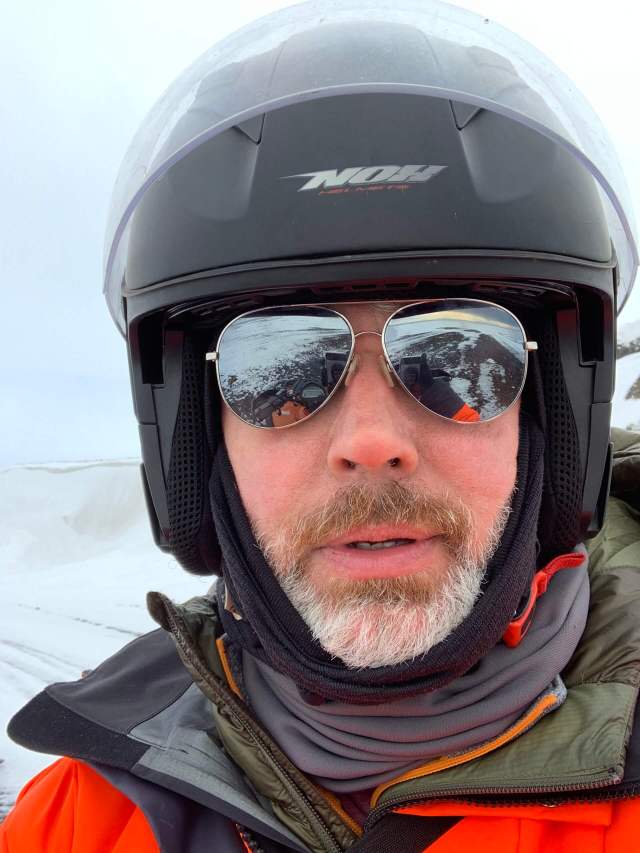A complete change of pace and location wakes you up – a well-traveled friend of mine.
Iceland woke me up, alright! From the moment I landed on my first international solo adventure, I was completely enraptured with the people, the geography and the history.
The Show Stopper
The cloud is moving nearer still
Aurora Borealis comes in view
Aurora comes in view
– A Flock of Seagulls, I Ran
Seeing the Northern Lights was one of the main reasons I picked Iceland. I found myself on a bus at 9 pm driving northward from Reykjavik to leave the light pollution of the city behind us. Our guide received live updates from satellites to help determine where we’d have the greatest probability of seeing the Aurora Borealis–though it’s never a guarantee.
We didn’t get a flashy light show. Ours was demure, but no less stunning. It was as if the sky were blushing bright green at the thought of our anticipation. And it only grew brighter as we “oohed” and “ahhed”. There were about 60 of us, standing in awe. Silent as we craned our heads upward and watched. It was a shared experience I’ll never forget.
The Black Sand Beaches
A friend had shown me a photograph of a crashed plane on the black sand beach on the south coast of Iceland several years ago. And ever since then, I’d been moderately obsessed with it. So, I booked the only tour I could find that included a visit to the plane wreck–via ATVs! We traversed snowbanks and streams of cold mountain water runoff. We went full speed on the beach while the North Atlantic roared violently nearby. It felt like it was daring me to go faster. (The beach is black from all the volcanic materials that run off the nearby volcano–which the guide said was way overdue for an eruption. Yikes. There were a few, in fact. Double yikes.)
The Plane Wreck
A US Navy Plan crash-landed on the beach in 1973. No one was hurt. You can read more about it here. It was surreal to actually be there to see it and touch it. It felt so out of place–a contrast of dulled metal submitting to nature’s superiority.
Skogafoss and Seljalandsfoss Waterfalls
Skogafoss Waterfalls is fed by the Skoga river. This cliff used to be the coastline of southern Iceland 10,000ish years ago, but as the ocean receded, the river mouth became falls.
Seljalandsfoss is a glacier river fed from the volcano Eyjafjallajökull which most recently erupted in 2010, canceling 30,000 flights globally. We stopped at Skogafoss right before I left the group on my ATV adventure. When I rejoined them 3 hours later, exhausted from the constant adrenaline rush, we stopped at Seljalandsfoss, but I took a nap on the bus. The pix I snapped of it were as we passed it on the way earlier in the day.
Thingvellir National Park & the Golden Circle
Because Iceland sits on two geological plates (North American and Eurasian) that are pulling apart at about 3/4 of an inch per year, it makes Iceland one of the “newest” landmasses on Earth. It also explains why it’s so geologically active with volcanos. In this national park, we visited the edge of the North American Plate. Then. traveled to the other side–which officially put me in Europe.
Reykjavik
Iceland’s population is about 300,000 people with 2/3 of them living in the Greater Reykjavik area. Conversely, their annual tourism is about 6,000,000 people per year. I ran into dozens of tourists from all over, but mostly Americans and Brits.















































